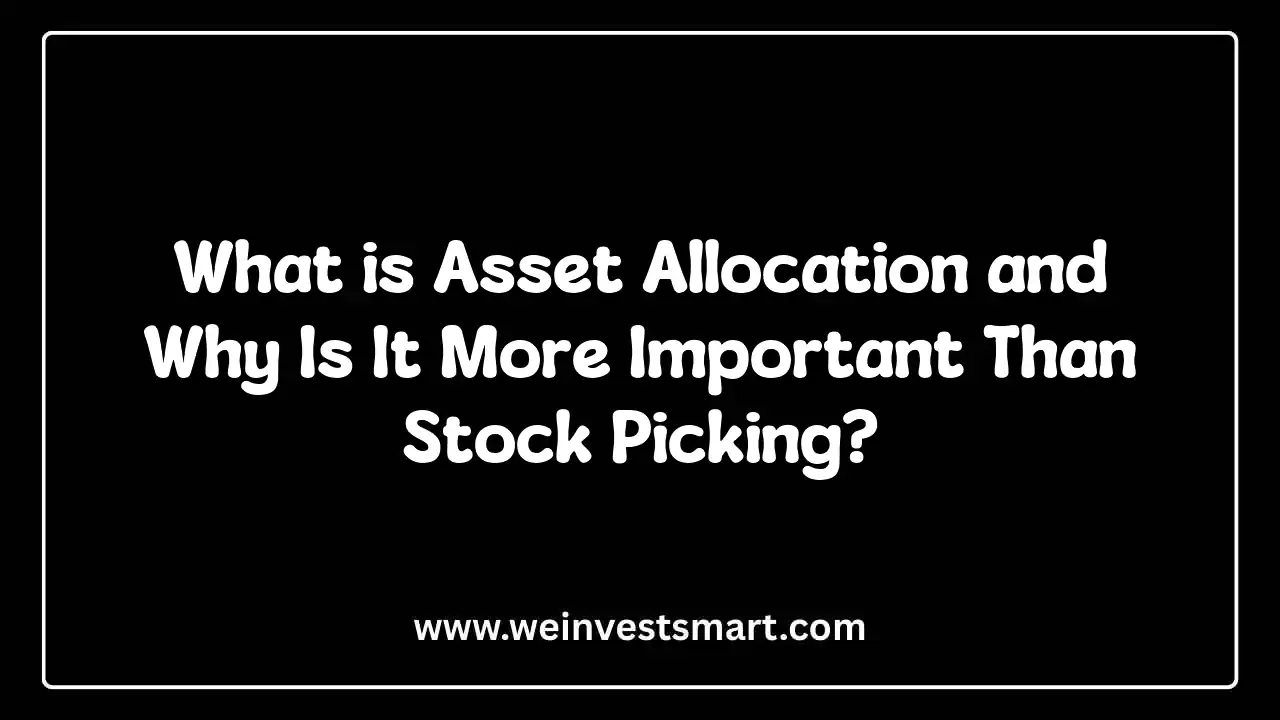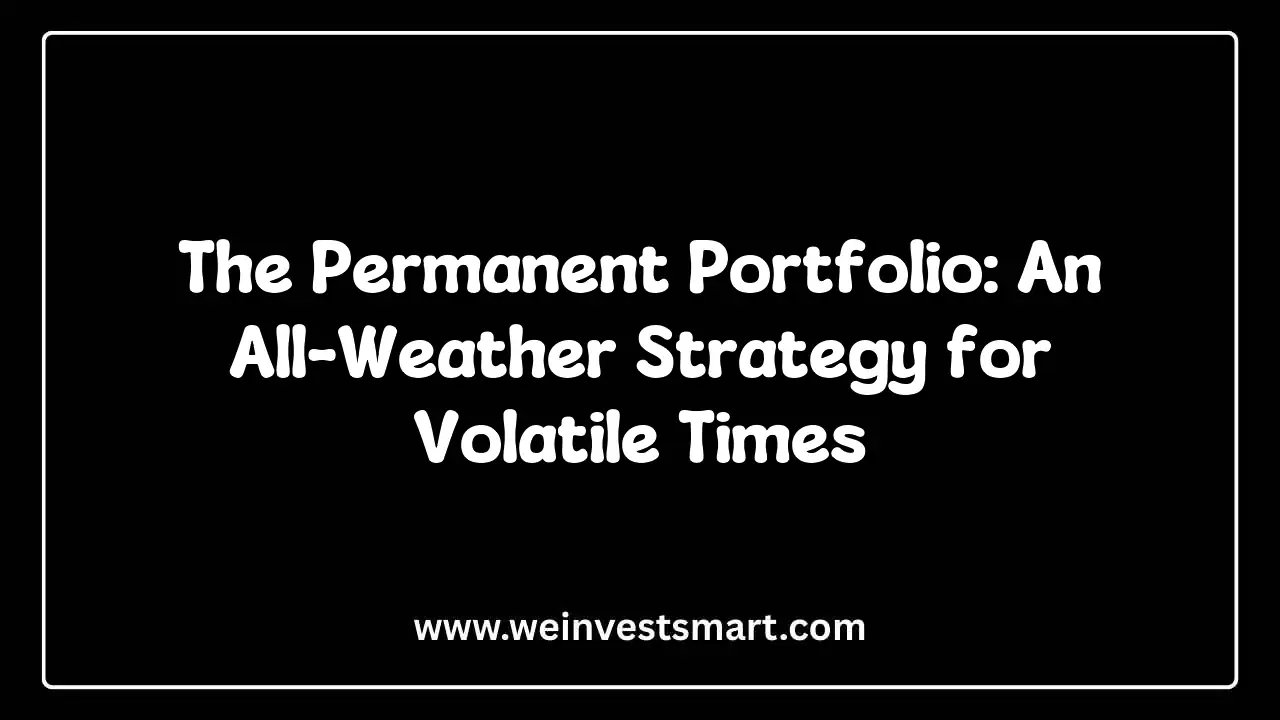· WeInvestSmart Team · investment-strategies · 10 min read
Stocks, Bonds, and Index Funds: A Simple Explanation for the Absolute Beginner
Use simple analogies to explain the three main types of investments. (e.g., A stock is a slice of a company pie, a bond is an IOU, an index fund is a pre-made basket of many slices).
Most people believe the world of investing is a secret club. They picture Wall Street traders shouting complex jargon into phones, staring at blinking green and red screens that predict the future. But here’s the uncomfortable truth: that image is a carefully constructed illusion. The complexity is a feature, not a bug, designed to make you feel like you need to pay an expert to manage your money. Going straight to the point, you don’t need a finance degree to build wealth. You only need to understand three fundamental concepts.
We’re conditioned to think that investing for beginners is like trying to learn a foreign language. But what if we told you it’s more like learning the three primary colors? Once you understand red, yellow, and blue, you can mix them to create any color in the rainbow. In finance, those primary colors are stocks, bonds, and index funds.
Here’s where things get interesting. Master these three simple ideas, and you will understand more about building wealth than 90% of the population. You will be able to build a powerful, diversified, low-cost portfolio that can set you on the path to financial freedom. And this is just a very long way of saying that it’s time to demystify the jargon and take back control of your financial future.
What Are Stocks? A Simple Guide to Owning a Slice of the Pie
Let’s start with the most famous—and most misunderstood—investment. Forget the flashing ticker symbols for a moment.
Going straight to the point, a stock (also called a share or equity) is a tiny piece of ownership in a company.
Think of a giant company like Apple as a massive pie. When you buy a share of Apple stock, you are not just buying a piece of paper or a digital number. You are buying a tiny, microscopic slice of that entire pie. You are now a part-owner of Apple. You own a sliver of every iPhone, every MacBook, and every patent.
That is to say, as an owner, you have a claim on the company’s assets and earnings. If the company succeeds, you succeed. So, how do you make money from owning this slice of the pie? There are two main ways:
- Appreciation: If Apple continues to innovate, sell more products, and increase its profits, the entire pie becomes more valuable. As the pie grows, the value of your tiny slice grows with it. You can then sell that slice to someone else for more than you paid for it. This is called a capital gain.
- Dividends: Some profitable companies will take a portion of their earnings and distribute it directly to their owners (the shareholders) as a cash payment. This is a dividend. It’s like the pie is so delicious and successful that the company hands you a little bit of the filling every quarter as a thank you for being an owner.
But what do we do with this knowledge? We must recognize that stocks are the “accelerator” in your investment portfolio. They offer the highest potential for long-term growth. The funny thing is that this potential for high reward comes with higher risk. If the company performs poorly, if a new competitor emerges, or if the economy falters, the value of the pie can shrink. Your slice becomes less valuable, and you could lose your entire initial investment.
What Are Bonds? A Safe Way to Earn Investment Income by Being the Bank
If stocks are about ownership, bonds are about something completely different: lending.
Going straight to the point, a bond is a loan made by an investor to a borrower. The borrower could be a corporation or a government (like the U.S. Treasury).
Think of it this way: when you buy a bond, you are acting as the bank. A large, stable entity—say, the U.S. government—comes to you and says, “Can I borrow $1,000 for ten years? If you lend it to me, I will send you a small payment every six months as a thank you, and I promise to give you your original $1,000 back at the end of the ten years.” That entire agreement is a bond. It’s a formal IOU.
So, how do you make money from this IOU? Again, there are two primary components:
- Interest Payments (The “Coupon”): The borrower pays you a fixed interest rate over the life of the loan. These predictable payments are why bonds are often called “fixed-income” investments. It’s a steady, reliable stream of cash.
- Return of Principal: At the end of the loan’s term (its “maturity”), the borrower repays the original amount of the loan, called the principal. You get your money back.
Here’s where things get interesting. Bonds are the “brakes” or “shock absorbers” in your portfolio. They are far less volatile than stocks. Their primary purpose is not explosive growth, but capital preservation and income generation. The risk is much lower; the U.S. government has never defaulted on its debt. The main risk with high-quality bonds is that their fixed payments might not keep up with inflation, or that the borrower could default (which is a bigger concern with corporate bonds). You get the gist: stocks are for growth, bonds are for stability.
You may also be interested in: Are You Leaving Free Money on the Table? A Deep Dive into Your 401(k) Company Match
Stocks vs. Bonds: Choosing the Right Asset Allocation for Your Goals
Now that we understand the two primary colors, we can start to mix them. The single most important decision an investor makes is not which stock to pick, but how to divide their money between stocks and bonds. This is called asset allocation.
Going straight to the point, your asset allocation is the recipe for your portfolio. A young investor with a long time horizon might have a more aggressive recipe, like 90% stocks and 10% bonds. An investor nearing retirement might have a more conservative recipe, like 50% stocks and 50% bonds.
But why mix them at all? Why not just go all-in on stocks for maximum growth? Because stocks and bonds have an interesting relationship: they often move in opposite directions.
In a year when the stock market is crashing and investors are panicking, they often flee to the perceived safety of U.S. government bonds. This increased demand can cause bond values to rise while stock values are falling. This balancing act is the core of building a resilient, all-weather portfolio. The bonds act as a cushion, softening the blow during a stock market downturn and helping you stay the course without panicking.
You may also be interested in: The Permanent Portfolio: An All-Weather Strategy for Volatile Times
What Are Index Funds? The Smartest Way for Beginners to Invest
Okay, so you know you need to buy a mix of stocks and bonds. But which ones? There are thousands of companies to choose from. How do you pick the winners?
The uncomfortable truth is: you don’t have to. In fact, you probably shouldn’t even try.
Going straight to the point, an index fund is a type of mutual fund or ETF that holds a portfolio of stocks or bonds designed to mimic the performance of a specific market index, like the S&P 500.
Let’s go back to our pie analogy. Instead of trying to find the single most delicious pie in the entire county, what if you could buy a special “pie basket”? This pre-made basket automatically contains a tiny sliver of every single one of the 500 largest and most successful pies (companies) in the country. That’s an S&P 500 index fund.
When you buy a single share of an S&P 500 index fund, you instantly become a part-owner of Apple, Microsoft, Amazon, Google, and 496 other major companies. And this is just a very long way of saying that an index fund gives you the power of massive diversification with a single purchase.
Here are the three superpowers of index funds:
- Instant Diversification: You’ve heard the phrase “don’t put all your eggs in one basket.” This is the core principle. With an index fund, you own hundreds or even thousands of stocks. If one company goes bankrupt, it has a minuscule impact on your overall portfolio. You’re no longer betting on a single company’s success; you’re betting on the long-term growth of the entire U.S. economy.
- Extremely Low Cost: Most investment funds are “actively managed,” meaning a highly paid manager is trying to pick winning stocks. The funny thing is that study after study has shown that the vast majority of these active managers fail to beat the market average over the long term. Index funds are “passively managed.” They don’t try to be clever; they just buy and hold all the stocks in the index. This makes their fees (called “expense ratios”) incredibly low. This is a huge deal, as high fees are the silent killer of investment returns.
- Proven Performance: By definition, an index fund will always give you the average return of the market it tracks, minus tiny fees. While “average” might not sound exciting, the average annual return of the S&P 500 has been around 10% historically. Achieving that, consistently and with low costs, is a winning strategy.
This sounds like a trade-off, because you’re giving up the chance to “beat the market,” but it’s actually a desirable thing. We covet this average return because the attempt to beat the market is what causes most investors to fail, buying high out of greed and selling low out of fear.
You may also be interested in: Dollar-Cost Averaging (DCA): The Most Powerful Antidote to Market Timing
The Bottom Line: Your Simple, Powerful, Three-Fund Portfolio
So, how do we put all this together? How do you, as a beginner, build a world-class, diversified portfolio?
Going straight to the point, you can do it with just two or three funds.
- A Total Stock Market Index Fund: This is your big basket of stocks, giving you a piece of nearly every public company in your country. This is your engine for growth.
- A Total International Stock Market Index Fund: To diversify even further, this basket gives you ownership in thousands of companies outside your home country.
- A Total Bond Market Index Fund: This is your basket of IOUs, containing thousands of high-quality government and corporate bonds. This is your shock absorber for stability.
That’s it. You decide on your asset allocation (your recipe, say 80% stocks and 20% bonds), buy these few funds in those proportions, and then you let the power of the global economy and compound growth do the heavy lifting for you.
The world of investing was designed to feel complex, but its core principles are beautiful in their simplicity. By understanding that stocks are ownership, bonds are loans, and index funds are the smartest way to buy them both, you have cracked the code. You have the knowledge to build a powerful financial future.
This article is for educational purposes only and should not be considered personalized financial advice. Consider consulting with a financial advisor for guidance specific to your situation.



